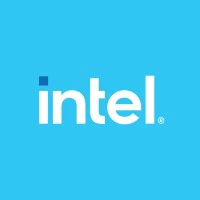Intel gets $5B investment, chip deal sparks short-term rally; fundamentals remain weak
Summary
On 09/18/2025, Intel was thrust into a headline‑driven re‑rating after a disclosed $5.00 billion strategic investment and multi‑generation chip collaboration—fueling heavy volume and short‑term bullish momentum while fundamentals (negative EPS, negative DCF) and a sell‑side consensus of “Hold” leave longer‑term prospects uncertain.
 Summary
Summary
Intel (INTC) closed 09/17/2025 at $24.90. The landscape changed materially on 09/18/2025 after a disclosed $5.00 billion investment and multi‑generation chip collaboration from a major industry peer, creating a strong sentiment catalyst. Technicals show a short‑term bullish bias; fundamentals remain mixed with negative EPS and a negative DCF output. Sell‑side consensus is “Hold.”
Technical Analysis
- Trend: Price sits above the 50‑day ($23.02) and 200‑day ($21.71) moving averages, indicating a constructive medium‑term trend.
- Momentum: RSI(14) 51 — neutral; MACD (3‑month) 0.93 — modest bullish momentum.
- Volatility: ATR 3.50 implies wide trading ranges (~14.06% of last close).
- Levels: Immediate support $24.56, resistance $24.93; calculated stop‑loss $23.91. Given the announced stake/collaboration, expect these intraday pivots to be superseded by new levels if the market re‑prices the stock.
- Liquidity: Latest volume 302.88 million vs average 97.09 million — current sessions show heavy, headline‑driven volume.
Fundamental Analysis
- Profitability & valuation: EPS (TTM) -$4.77, P/E -6.72 (negative P/E reflects losses). Market cap $140.39 billion. Sell‑side targets are clustered low: consensus $21.00, median $21.50, high $22.00. Analyst ratings: 25 buy / 46 hold / 9 sell → consensus: Hold.
- Corporate catalyst: The $5.00 billion strategic investment and chip co‑development tie Intel to the AI/data‑center wave and provides capital and validation from a high‑profile peer. That should materially improve near‑term sentiment and strategic optionality, but execution risk and competitive dynamics remain significant.
- Cash‑flow/intrinsic: The provided DCF is negative (-$22.89 per share), indicating that under the modeled assumptions free cash‑flows are insufficient to produce a positive present value. That underscores structural challenges in restoring consistent cash generation at previous margins.
Next Trading Day (09/18/2025) Outlook
- Expected action: High probability of a large gap up at the open driven by the announced $5.00 billion stake and partnership. Precedent price prints show moves into the low $30s on the headline.
- Intraday range projection: Open ~ $30.00–$32.50; intraday high/low range likely $28.00–$33.50 as momentum buying meets rapid profit‑taking. Watch for anomalous volatility around early trading and aftermarket commentary.
- Volume: Substantially above average; trade will be headline‑driven rather than fundamentals‑driven on day one.
Upcoming Week Outlook
- Probable path: Initial re‑rating and headline chasing in first 1–2 sessions, followed by consolidation. By week end, expect either partial retracement into $26.00–$29.00 if profit‑taking dominates, or extension above $32.00 if the market interprets the partnership as materially de‑risking Intel’s AI competitiveness.
- Key hinge: Market focus will shift to commentary on deal mechanics, share dilution (if any), governance implications, and roadmap specifics for co‑developed chips. Absent substantive supportive details, upside may be fleeting.
Intrinsic Value & Long‑Term Potential
- Intrinsic value: The supplied DCF yields a negative intrinsic value (-$22.89 per share), signaling that under current cash‑flow projections and discounting assumptions Intel does not clear a positive intrinsic mark. This result highlights ongoing structural profitability and cash‑generation concerns.
- Long‑term potential: Strategically, the partnership repositions Intel into the AI/data‑center roadmap and supplies capital and credibility. If execution on process roadmaps and product performance improves, long‑term upside exists. However, realization of that upside requires sustained execution on manufacturing, competitive product performance, and margin recovery — all non‑trivial. The path to restored, durable free cash‑flow is uncertain.
Risk Factors
- Execution risk on manufacturing nodes and product performance vs peers.
- Continued negative earnings and cash‑flow pressure.
- Potential governance or integration complications from the new strategic investor.
- High volatility and headline dependence in the near term.
Overall Evaluation
Hold — The catalyst from the $5.00 billion stake and collaboration materially improves sentiment and tactical upside in the very near term, but underlying fundamentals remain challenged (negative EPS, negative DCF, conservative sell‑side targets). The risk/reward profile favors watching for concrete execution evidence and deal details before shifting a long‑term stance. For traders, the situation offers short‑term trading opportunities; for long‑term investors, the thesis requires verified improvement in cash‑flow generation and product execution to justify an upgrading commitment.



 Sign In
Sign In